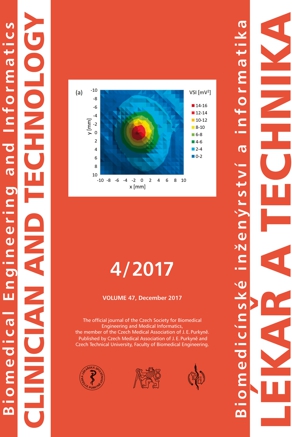Pain and Stress Measurement During General Anesthesia Using the Respiratory Sinus Arrhythmia
Keywords:
Pain, Respiratory Sinus Arrhythmia, Heart Rate Variability, Analgesia Nociception Index, Surgical Analgesia IndexAbstract
Measuring intraoperative pain and stress during general anesthesia is still problematic. Instead of having access to meaningful and robust pain measurements, anesthetists must use their experience and intuition to ensure a proper pain therapy. The correct dosage of analgesics is crucial for a stable patient, since underdosing may lead to neurogenic shock. Overdosing can result in critically low blood pressures and heart rates.
Several possible approaches towards measuring pain have been proposed in the last years. We briefly summarize them and evaluate their usability in a general anesthesia setting. A promising approach is given by the Analgesia Nociception Index. We developed an advanced algorithm, called the Surgical Analgesia Index, which improves its concept for the use in a fully connected smart operating room. This paper is dedicated to its description, preliminary validation and comparison against the original index.
Downloads
Published
Issue
Section
License
Copyright (c) 2018 Janosch Frederic Kunczik, Marucs Koeny, Czaplik Michael, Vladimir Blazcek, Steffen Leonhardt

This work is licensed under a Creative Commons Attribution 4.0 International License.
Authors who publish with this journal agree to the following terms:
- Authors retain copyright and grant the journal right of the first publication with the work simultaneously licensed under a Creative Commons Attribution License (https://creativecommons.org/licenses/by/4.0/) that allows others to share the work with an acknowledgment of the work's authorship and initial publication in CTJ.
- Authors are able to enter into separate, additional contractual arrangements for the non-exclusive distribution of the journal’s published version of the work (e.g., post it to an institutional repository or publish it in a book), with an acknowledgment of its initial publication in this journal.
- Authors are permitted and encouraged to post their work online (e.g., in institutional repositories or on their website or ResearchGate) prior to and during the submission process, as it can lead to productive exchanges.
CTJ requires that all of the content of the manuscript has been created by its respective authors or that permission to use a copyrighted material has been obtained by the authors before submitting the manuscript to CTJ. CTJ requires that authors have not used any copyrighted material illegally, as for example a picture from another journal or book, a photo, etc. It is the author’s responsibility to use only materials not violating the copyright law. When in doubt, CTJ may ask the authors to supply the pertinent permission or agreement about the use of a copyrighted material.
The opinions expressed in CTJ articles are those of authors and do not necessarily reflect the views of the publishers or the Czech Society for Biomedical Engineering and Medical Informatics.


